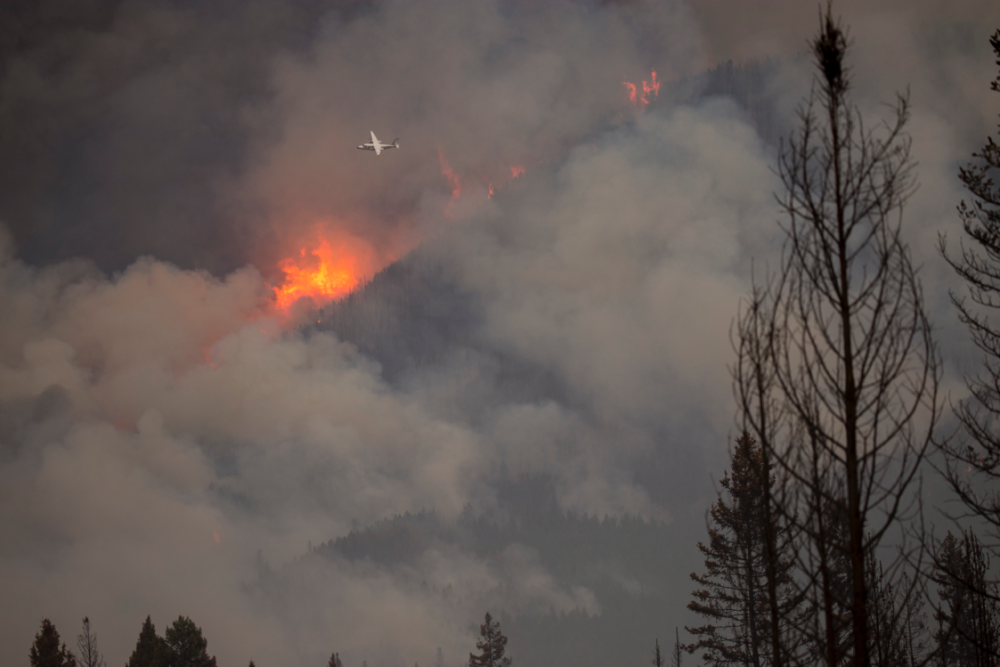Missoula County to seek ecological, economic balance in Rice Ridge fire salvage
Posted: February 5, 2018Source: Missoula Current

Multiple wildfires burned roughly 227,000 acres on the Lolo National Forest last summer, with the Rice Ridge fire being the largest. The fire sparked in late July and burned into the early fall, affecting around 160,000 acres in all.(inciweb.com)
With the deadline to submit comments on salvage work proposed for the Rice Ridge fire looming, Missoula County commissioners will likely urge the Lolo National Forest to do its best to balance the ecological impacts with sensible economic opportunities as it moves toward a decision.
Commissioners on Wednesday attempted to finalize a letter of comment, though the original proposals considered by the Forest Service continue to evolve based upon conditions on the ground. Commissioners are set to meet with Lolo forest officials on Jan. 31.
“The original proposals you see there are being modified somewhat as they find unique circumstances on the ground,” said Pat O’Herron, the county’s planning services director. “They’re still gathering that information, so it might be a little premature at this point to decide what you want to comment on.”
Multiple wildfires burned roughly 227,000 acres on the Lolo National Forest last summer, with the Rice Ridge fire being the largest. The fire sparked in late July and burned into the early fall, affecting around 160,000 acres in all.
Seeley Lake District Ranger Rachel Feigley said many areas of the fire burned with moderate to severe intensity that completely consumed tree crowns and all or most of the organic material on the forest floor.
The fire also burned areas of the district that were allocated as suitable for timber production in the Lolo Forest Plan. As a result, Feigley said, salvaging burned timer has been deemed appropriate and will be considered – something the county may support as it weighs in on the proposal.
“Salvage logging would have some good economic benefits in the area, especially if it’s done in line with the capacity of the local mills, both in terms of quantity and the types of logs they can take most efficiently,” advised Kali Becker, the county’s natural resource specialist.
“That being said, burned areas are very sensitize,” she added. “You have burned soils that will be more erosive and more compactable. Given all the important aquatic resources there, it’s important to consider.”
In a memo to the county, Feigley noted the goals of the Lolo Forest Plan, including its aim to provide a sustainable yield of timber to support both local and regional needs.
Statewide, she noted, the forest products industry employs nearly 8,000 workers and provides $335 million in annual compensation. The majority of that industry is centered in western Montana where the Rice Ridge Fire Salvage Project is located.
“Timely implementation of salvage operations is necessary because the volume and quality of wood products deteriorates rapidly after a fire,” Feigley said. “Harvesting burned materials would provide jobs associated with logging and milling and contribute to the supply of timber from National Forest System land.”
As proposed, the salvage plan has several stated goals, including the reduction of hazards posed by falling snags. The plan also looks to reestablish pre-fire conditions and aid in forest recovery.
Proposed activities would likely begin late this summer, with harvesting completed over two years. Taking dead and dying trees could occur on nearly 5,000 acres, representing 3 percent of the National Forest System land burned in the fire.
“Montana Fish, Wildlife and Parks and all those people are going to make comments on the impacts of the resources they’re responsible to protect, so I have confidence in the process,” said Commissioner Jean Curtiss. “But if we’re going to write a letter, we should put something in there about the economic part, because that’s the piece that the people who live there are most worried about.”
While Forest Service policy normally limits the size of a harvest to 40 acres or less, that can be exceeded after natural catastrophes, such as fires, windstorms and insect attacks, Feigley said.
In her memo, she added that reforestation is proposed for 11,500 acres.
“Because of the extensive areas of high tree mortality and the type of tree species on the site prior to the fire, the seed source is now limited in some areas,” Feigley noted. “Depending on site conditions, western larch, ponderosa pine, lodgepole pine, Douglas fir, Englemann spruce and whitebark pine seedlings may be planted.”
While the county may not focus on a single aspect of the proposed salvage plan, commissioners are likely to suggest that the Forest Service balance the ecological impacts with the potential economic benefits.
“One way to do this would be to state the continued trust the county has in the Forest Service to utilize their expertise to balance all of these values,” said O’Herron. “We could take that language and make it a positive letter while noting any concerns.”

